Step into a world where ancient romance meets shadowy elegance—the Medieval Goth Aesthetic is your portal to timeless darkness. Blending the drama of gothic fashion with the rich detail of historical clothing, this aesthetic draws from the Middle Ages and adds a haunting twist. Whether you’re captivated by flowing gowns, velvet textures, or castle-inspired accessories, medieval goth style invites personal transformation. It’s not just a look—it’s a lifestyle steeped in fantasy, mystery, and old-world charm. From wardrobe essentials to symbolic accessories, this guide will help you build a darkly regal look with both authenticity and flair. Ready to begin your journey?
Imagine stepping into a world where ancient castles meet modern darkness. Picture yourself wrapped in flowing velvet, adorned with mystical jewelry, channeling the essence of a dark enchantress. The medieval goth aesthetic isn’t just fashion—it’s a complete transformation that bridges centuries of style and mystery.
This comprehensive guide unveils everything you need to embrace this captivating dark aesthetic. You’ll discover authentic styling secrets, essential wardrobe pieces, and cultural inspirations that define this unique gothic subculture. Whether you’re drawn to Renaissance faire events or simply love the romance of bygone eras, this journey will transform your understanding of gothic fashion.
What is Medieval Goth? Origins and Influences
The medieval goth aesthetic represents a fascinating fusion of historical European fashion from the Middle Ages (1000-1600 CE) with contemporary gothic subculture elements. Unlike traditional goth’s stark black palette, this medieval gothic style embraces rich colors and authentic medieval fashion silhouettes. Think flowing gowns meet dark romantic elements, where historical accuracy dances with fantasy interpretation.
This dark aesthetic draws profound inspiration from actual medieval clothing, Renaissance period craftsmanship, and dark fantasy literature masterpieces. The aesthetic captures the mystique of medieval castles, candlelit chambers, and enchanted forests. It’s where Lord of the Rings meets gothic architecture, creating something entirely unique and mesmerizing.
The cultural evolution began with Gothic cathedrals—those soaring pointed arches and mysterious shadows that originally inspired the gothic movement. Renaissance faire communities and historical reenactment enthusiasts played crucial roles in shaping this aesthetic’s authentic foundation. Modern practitioners blend scholarly research with creative interpretation, resulting in a style that honors historical fashion while embracing contemporary gothic sensibilities.
Key Features of Medieval Goth Style
Medieval clothing silhouettes form the backbone of this aesthetic, emphasizing flowing, romantic lines that echo period costume design. The style celebrates architectural construction in fashion—think corseted bodices that create dramatic waist definition, bell sleeves that sweep gracefully, and long skirts that move like liquid poetry. These elements create an ethereal, otherworldly presence that’s both historically grounded and fantastically inspired.
What distinguishes this from other gothic substyles is its commitment to historical authenticity paired with a broader dark colors palette. While traditional goth clings to black, medieval goth embraces deep burgundy, forest green, royal blue, and dark purple. The emphasis on quality heavy fabrics and authentic materials creates a luxurious feel that sets it apart from more modern gothic interpretations.
The aesthetic seamlessly blends elements reminiscent of knights and wizards with the elegance of European fashion, creating a unique style that appeals to fans of Game of Thrones and other dark fantasy media.
Medieval Goth Fashion Essentials
Medieval Gothic Dresses
Medieval dresses serve as the cornerstone of any authentic wardrobe, with gothic gowns ranging from simple linen peasant blouse combinations to elaborate velvet ceremonial pieces. The corset-style bodices create that coveted hourglass silhouette while providing structural support for flowing gowns. Sleeve variations include bell sleeves for dramatic flair, fitted sleeves for elegance, and off-shoulder designs for dark romantic appeal.
Quality medieval dresses typically range from $84 to $165, with handmade pieces commanding higher prices. A forest green linen dress with lace-up front evokes woodland witch vibes, while a black velvet gown with brocade details channels dark enchantress energy. The key lies in choosing pieces that balance historical accuracy with personal style preferences.
Medieval Goth Accessories
Gothic jewelry transforms simple outfits into stunning medieval ensembles, with Celtic knot pendant pieces, dark stone rings, and chain mail jewelry adding authentic touches. Medieval accessories extend beyond jewelry to include leather pouches, ornate buckles, and leather wrist guards that serve both function and style. These practical additions aren’t just decorative—they’re functional for carrying modern essentials while maintaining historical authenticity.
Headpieces deserve special attention, from delicate dark diadem pieces to elaborate flower crown designs that frame the face beautifully. Veils add mystery and elegance, while decorative weapon replicas like ornamental swords complete the fantasy elements. For those seeking unique touches, elf ears and gothic symbols can add fantastical elements to the overall aesthetic.
Medieval Goth Color Palette and Fabrics
Essential Colors
Deep colors form the foundation of medieval goth aesthetics, with rich colors like deep burgundy, forest green, and dark purple creating dramatic visual impact. These jewel tones evoke the luxury of medieval nobility while maintaining gothic darkness. Earth tones including olive green, charcoal, and off-white provide grounding elements that prevent the palette from becoming too fantastical.
The psychology behind these color choices connects to medieval symbolism—royal blue represented nobility, crimson symbolized passion and power, while forest green evoked nature’s mystery. Modern practitioners can adapt these seasonal colors, using deeper shades in winter and slightly lighter variations in spring and summer.
Authentic Fabrics and Textures
Velvet reigns supreme in medieval goth fashion, offering luxurious texture and rich color depth that photographs beautifully. Brocade provides historical authenticity with its raised patterns and metallic threads, while medieval fabrics like linen and wool offer natural, breathable options for everyday wear. Silk and damask create the foundation upon which authentic medieval gothic style is built.
Quality indicators include fabric weight, drape, and finishing details. Investment pieces should feature hand-sewn embellishments, quality linings, and durable construction. Leather, suede, and lace details add authentic medieval touches that elevate simple garments into stunning period costume pieces.
Related Aesthetics and Substyles
Dark Fairycore
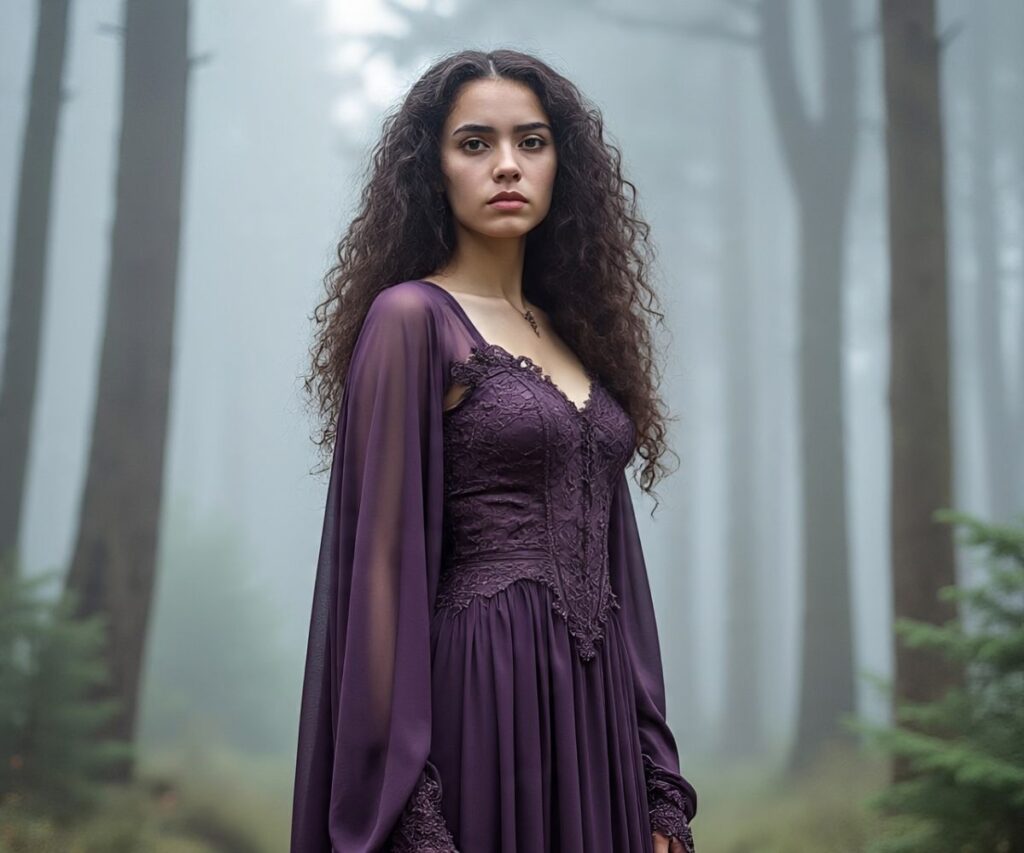
Dark fairycore weaves fairytale gothic elements with gothic darkness, creating an enchanted forest aesthetic that complements medieval goth beautifully. This substyle incorporates natural elements like wings, leaves, and flowers but gives them a darker, more mysterious interpretation. Fantasy elements from films like Labyrinth and Pan’s Labyrinth provide inspiration for this magical yet ominous aesthetic.
The overlap with medieval goth appears in flowing garments, nature motifs, and earth-toned color palettes. Both aesthetics celebrate the mysterious and otherworldly, making them natural companions in a versatile wardrobe.
Witchcore
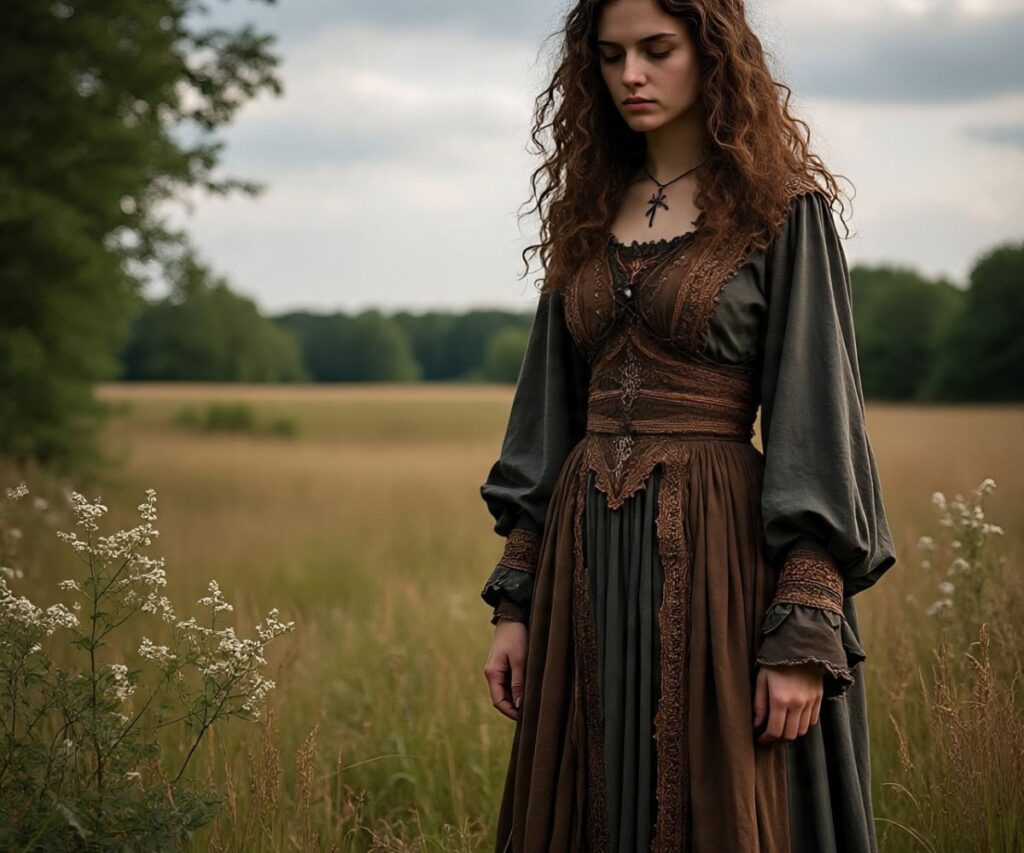
Witchcore shares medieval goth’s love for hooded cloaks, corsets, and flowing gowns while emphasizing mystical symbols and ritual elements. This aesthetic draws from folk traditions, herbalism, and ancient spiritual practices. Modern witchcore interpretations include mesh tops and shirt dresses alongside traditional medieval-inspired clothing.
The connection lies in both aesthetics’ celebration of the mystical and mysterious. Witchcore practitioners often incorporate metal jewelry, crystal accessories, and herb-inspired motifs that complement medieval goth’s historical fantasy elements.
Both aesthetics enhance the medieval goth outfit possibilities by providing seasonal variety and creative layering opportunities. The aesthetic synergy allows for seamless transitions between different moods and occasions while maintaining gothic authenticity.
Building Your Medieval Goth Wardrobe
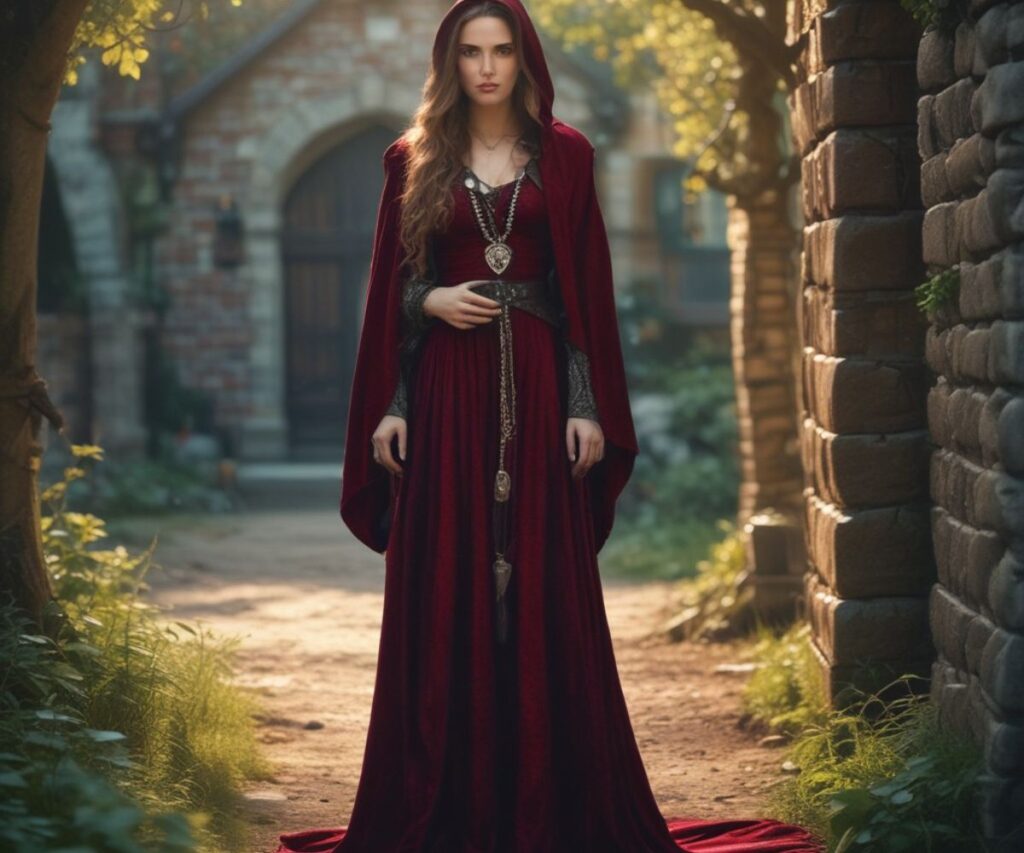
Starting your medieval goth outfit collection doesn’t require a massive budget. Budget-friendly foundation pieces include simple linen peasant blouses ($30-50), long skirts ($40-60), and basic corsets ($60-80). Thrifting strategies can uncover vintage pieces perfect for modification, while estate sales often yield authentic medieval-inspired items at fraction of retail prices.
DIY modifications transform ordinary garments into medieval masterpieces. Adding lace trim to sleeves, replacing modern buttons with medieval-style clasps, or dyeing fabrics to achieve authentic colors creates personalized pieces. The key is starting with quality base garments that can withstand modifications and regular wear.
Investment pieces worth splurging on include custom corsets ($150-300), handmade gowns ($200-500), and authentic reproduction accessories. Quality medieval clothing lasts decades with proper care, making these purchases worthwhile long-term investments. Handmade accessories from skilled artisans offer unique details impossible to find in mass-produced items.
Seasonal wardrobe planning ensures year-round wearability. Lighter fabrics and colors work for spring and summer, while heavier velvets and deeper tones suit autumn and winter. Proper storage prevents fabric damage and maintains garment shape between wears.
Medieval Goth Makeup and Hair
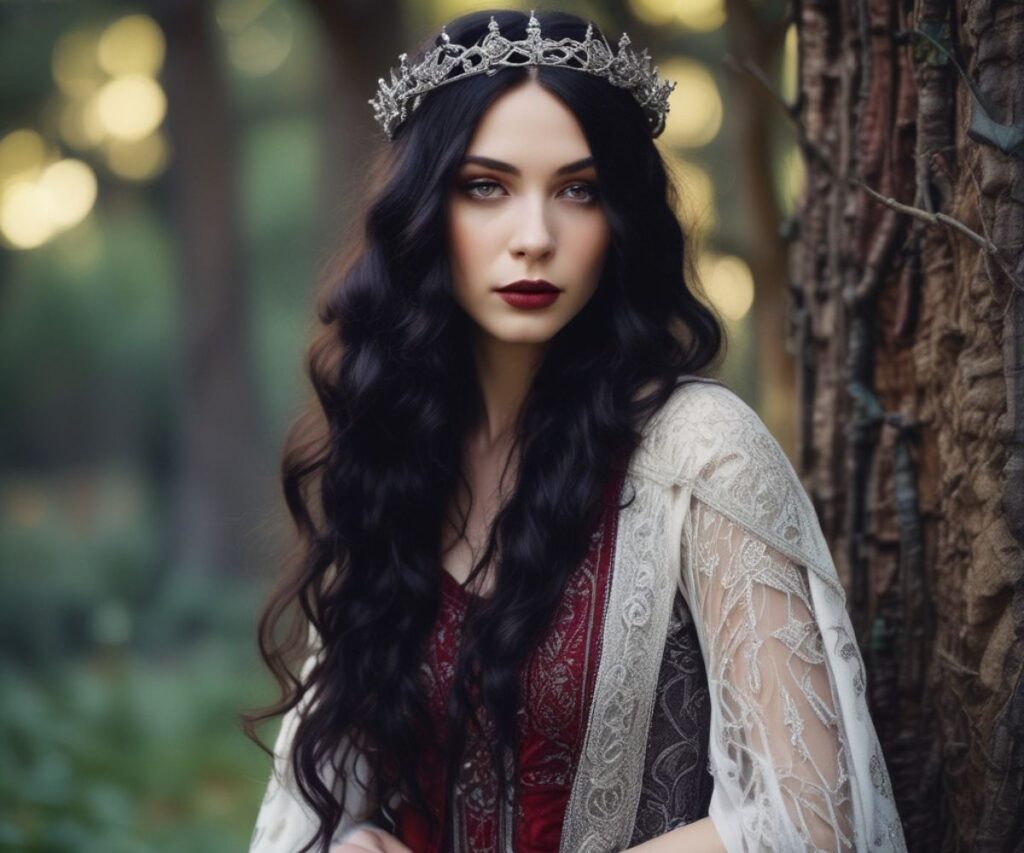
Gothic fashion makeup for medieval aesthetics emphasizes dramatic eye makeup using deep purples, deep burgundy, and black shades. The goal is creating ethereal, otherworldly beauty that complements historical garments. Dark makeup techniques include heavy kohl lining, smoky eyeshadow blending, and strategic highlighting to create dimensional, mysterious eyes.
Pale foundation provides striking contrast against dark clothing and accessories. Lip colors range from deep berries to rich wines, avoiding modern bright shades that clash with historical authenticity. Contouring creates the high cheekbones and defined jawlines seen in medieval portraiture.
Medieval hairstyles celebrate long, flowing locks as the period ideal. Hair accessories like circlets, metal headbands, and delicate veils add authentic touches without overwhelming natural beauty. Historical hair techniques include elaborate braiding, loose waves, and strategic pinning that creates romantic, windswept effects.
Medieval Goth Lifestyle and Home Decor
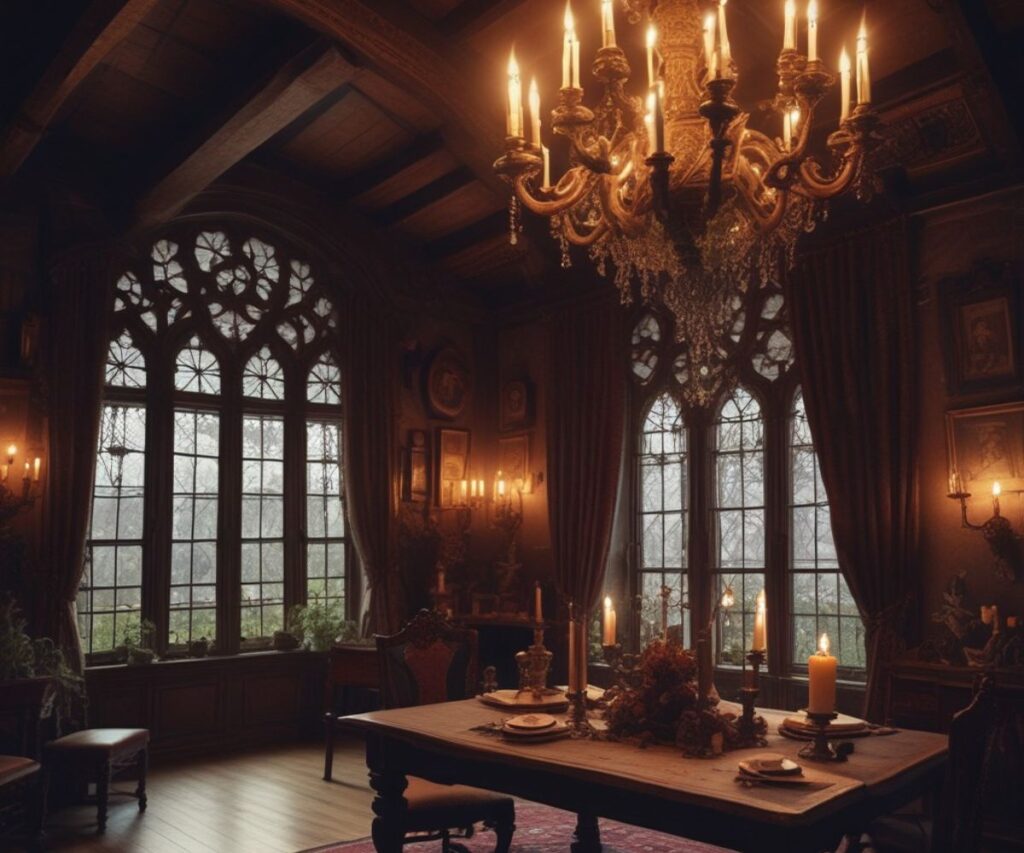
The medieval lifestyle extends beyond clothing into daily rituals and environmental choices. Incorporating candlelight, natural materials, and handcrafted items creates atmospheric living spaces that support the aesthetic. Atmospheric elements like dried herbs, crystals, and antique books add authentic medieval touches to modern homes.
Seasonal celebrations take on special meaning in medieval goth culture. Autumn harvest festivals, winter solstice observances, and spring equinox celebrations provide opportunities to fully embrace the aesthetic. These gatherings often feature period-appropriate foods, traditional crafts, and historical music.
Gothic home decor emphasizes dark woods, ornate details, and rich textiles that complement personal style choices. Medieval furniture doesn’t require antiques—reproduction pieces and modified modern furniture can achieve the desired castle aesthetics. Heavy curtains, tapestries, and candlelit spaces create the mysterious ambiance essential to the lifestyle.
Medieval Goth in Popular Culture
Books, Films, and TV Shows
Medieval literature provides endless inspiration for aesthetic enthusiasts, with works like Tolkien’s Lord of the Rings saga, Arthurian legends, and gothic romance novels offering rich visual imagery. Modern fantasy series including Game of Thrones and The Witcher showcase medieval aesthetics adapted for contemporary audiences. These dark fantasy series demonstrate how historical elements can be reimagined for modern storytelling.
Period dramas and historical fiction films provide authentic costume inspiration and lifestyle glimpses. Movies like The Green Knight and A Knight’s Tale blend historical accuracy with modern sensibilities, creating accessible entry points into Renaissance period culture. The influence of Dungeons & Dragons and similar fantasy media has also shaped modern interpretations of medieval gothic style.
Art and Music Influences
Gothic art from the Pre-Raphaelite movement heavily influences modern medieval goth aesthetics, with painters like Dante Gabriel Rossetti creating idealized medieval beauty standards. Medieval music including gregorian chants, period instruments, and modern interpretations of historical compositions provides atmospheric soundscapes for the lifestyle.
Modern digital art and photography continue evolving the aesthetic, with social media platforms showcasing contemporary interpretations of medieval themes. Artists blend historical references with modern techniques, creating fresh perspectives on ancient inspirations.
Shopping Guide: Where to Find Medieval Goth Fashion
Online retailers specializing in medieval goth clothing offer convenient access to authentic pieces and reproductions. Handmade marketplace platforms like Etsy connect buyers with skilled artisans creating custom pieces. Renaissance faire vendors provide opportunities to see and try garments before purchasing, while seasonal events offer exclusive items unavailable elsewhere.
Quality indicators include fabric composition, construction details, and seller reputation. Sizing considerations are crucial for corsets and fitted garments, with many sellers offering custom sizing services. Return policies and customer service become especially important for online purchases of specialty items.
DIY medieval goth projects can create unique pieces while building practical skills. Budget medieval clothing options exist for every price range, from $20 accessories to $200+ investment gowns. Historical reenactment groups and gothic communities often share resources and recommendations for authentic pieces.
Essential Medieval Goth Wardrobe Checklist

| Category | Essential Items |
|---|---|
| Dresses | Long flowing gown, corset dress, peasant blouse |
| Accessories | Celtic pendant, leather belt, circlet, chain mail jewelry |
| Footwear | Leather boots, pointed shoes |
| Outerwear | Hooded cloak, velvet cape |
| Undergarments | Corset, chemise |
Color Palette Reference Guide
| Season | Primary Colors | Fabric Suggestions |
|---|---|---|
| Spring | Forest green, lavender | Linen, light cotton |
| Summer | Deep blue, sage | Breathable cotton, silk |
| Autumn | Deep burgundy, orange | Velvet, wool |
| Winter | Black, dark purple | Heavy velvet, brocade |
Care and Maintenance Tips
Proper care extends the life of your medieval goth wardrobe significantly. Velvet requires special attention—steam rather than iron, and store hanging to prevent crushing. Brocade and silk should be dry cleaned or hand washed with gentle detergents. Leather accessories need regular conditioning to maintain suppleness.
Storage solutions include breathable garment bags for gowns, padded hangers for corsets, and cedar blocks to prevent moth damage. Seasonal rotation prevents excessive wear and allows pieces to rest between uses.
Conclusion
The medieval goth aesthetic offers a unique opportunity to blend historical authenticity with personal creative expression. This timeless style celebrates the romance of bygone eras while embracing modern gothic sensibilities. Whether you’re attending a Renaissance faire or incorporating medieval elements into daily life, this aesthetic provides endless opportunities for creative exploration.
Building an authentic medieval goth wardrobe takes time and patience. Start with foundational pieces like a quality corset or flowing gown, gradually adding accessories and specialty items as your style evolves. The gothic community offers tremendous support for newcomers, with online forums, local groups, and seasonal events providing opportunities to connect with like-minded individuals.
Your journey into medieval goth begins with a single piece—perhaps a flowing dress with bell sleeves, a mystical Celtic knot pendant, or a dramatic hooded cloak. Choose items that speak to your personal aesthetic vision and build from there. The magic of medieval goth lies not just in the period costume elements, but in the confidence and mystery it helps you embody.
Embrace the darkness, celebrate the romance, and step into your own dark fairytale. The medieval goth aesthetic awaits your unique interpretation and personal touch, offering a timeless expression of dark elegance that bridges the gap between historical fashion and contemporary gothic subculture.
Frequently Asked Questions About Medieval Goth Aesthetic
What is Medieval Goth?
Medieval Goth is a fusion of gothic fashion and historical medieval clothing, inspired by the Middle Ages and dark fantasy aesthetics. It blends flowing fabrics, rich colors like burgundy and forest green, and accessories like corsets and cloaks to create a regal yet mysterious look.
Who were the Medieval Goths?
The original Goths were East Germanic tribes from late antiquity, not directly related to modern goth fashion. However, the term “gothic” later influenced art and architecture in the medieval period, which modern medieval goth aesthetics draw inspiration from.
What are the three Goth rules?
While not official, many goths follow these personal rules: express your individuality, respect the culture’s roots in music and fashion, and embrace the dark aesthetic with authenticity. Medieval goth adds a historical and fantasy twist to these principles.
What is Medieval Gothic art?
Medieval Gothic art emerged in 12th-century Europe and includes stained glass, illuminated manuscripts, and dramatic architecture. Its dark, spiritual themes and ornate detail heavily inspire medieval goth aesthetics, especially in clothing and décor.
Is Medieval Times Gothic?
While “medieval” and “gothic” are separate historical terms, their timelines overlap. The Gothic period in architecture and art began during the medieval era, and much of what defines the medieval goth aesthetic today draws from this crossover in history.
If you’re interested in Witchcore Outfit Essentials, be sure to check out our Witchcore Outfit Essentials: Best Outfits to Cast a Fashion Spell to explore more unique and dark options!

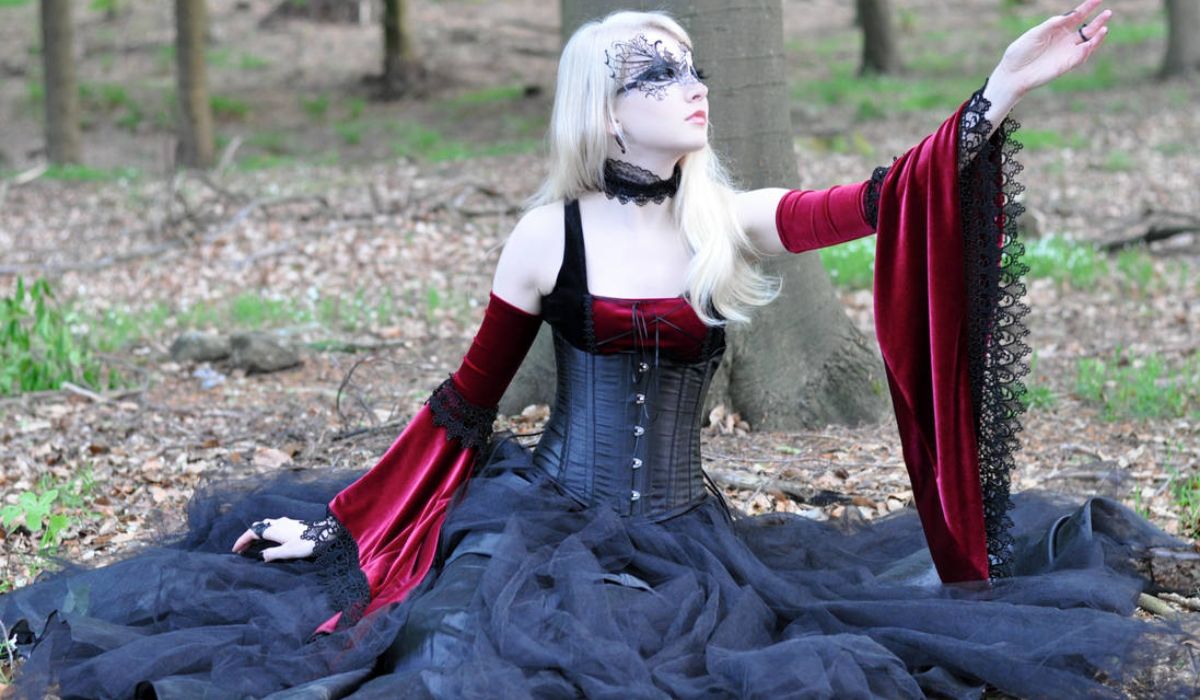
1 thought on “How to Start Your Medieval Goth Aesthetic Journey (For Baby Bats & Beginners)”